Seasonal Garden Care Diary: February
Hi there!
On the stone memorial inside his garden, Murin-an’s original owner, Yamagata Aritomo, records the following words:
「“It is also splendid to have flowers whose names I do not even know blooming amid the lush moss.”
With the coming of spring each year, there are 39 wildflower species that bloom on the bright lawn space in Murin-an’s garden. Generally speaking, these are wildflowers that usually would be removed as weeds. Following the words of Murin-an’s stone monument, however, we perform lawn management that carries on the intentions of Yamagata Aritomo, that lover of unknown wildflowers, in creating his garden. (Text: Miyako Hamasaka)
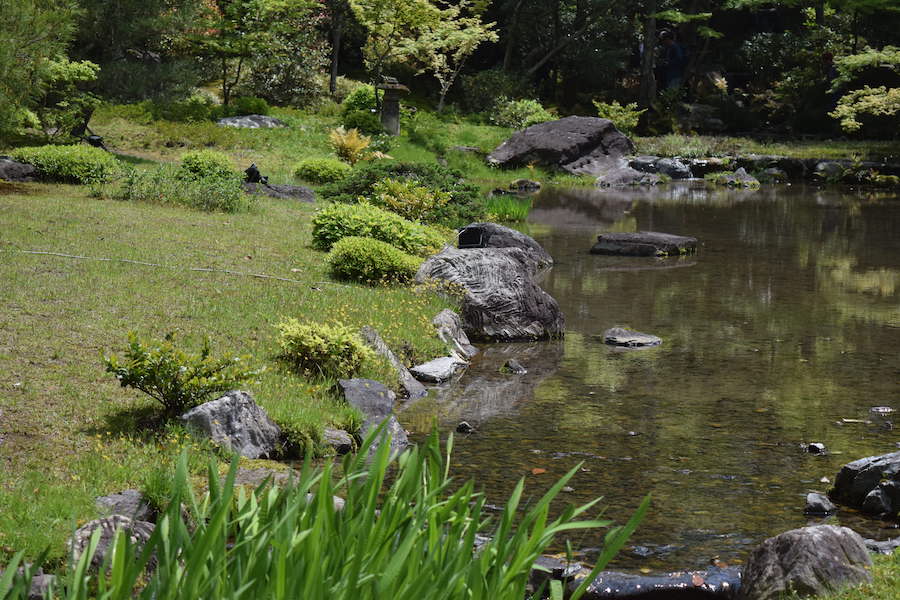
Toothed ixederium
Hello. This is Miyako Hamasaka, Murin-an’s planning officer since autumn 2019.
As planning officer for “Gather in the Garden, Nurture the Garden,” I host events and workshops held at Murin-an, take photographs of the garden, and listen to the views of our visitors.
On February 10, I worked in Murin-an’s garden under the direction of our head gardener. Based on the work we did that day, I will briefly report on how a garden that is one of Japan’s registered Places of Scenic Beauty is fostered. The coldest temperature of the year was recorded on this day. Improbably enough, the weather was sub-freezing! On this truly Kyoto day of bone-chilling weather, we worked in the garden from early in the morning until the evening hour of 4:00 PM.
***
This day’s work was that of picking buds of Murin-an’s “weed-out wildflowers” so that other wildflowers can bloom healthfully in the spring. We worked under the direction of Murin-an’s head gardener Kenta Deguchi.
7:00 AM
First, we prepared the garden to welcome its visitors. Murin-an opens at 9:00 AM. By that time, we tidied up the main house’s entrance area, the garden periphery, and the garden path. We cleaned up fallen leaves from the foyer area to the reception window and the garden’s front gate. We then walked around the outer wall, cleaning up branches, fallen leaves and road debris.
8:00 AM
Murin-an’s garden includes several viewpoints. Today, our worksite is the lawn that surrounds one of these viewpoints, Murin-an’s temple pillar stone (garan-ishi). No matter whether you are in the main house’s 8-tatami mat space, 10-tatami mat space, or its second floor (usually closed to the public), this is the area your eyes go to first. Taking to heart the words of our head gardener—“the gardener is a part of the scenery”—we carefully begin our work.
The most comfortable posture turned out to be straight Japanese-style sitting (seiza)…
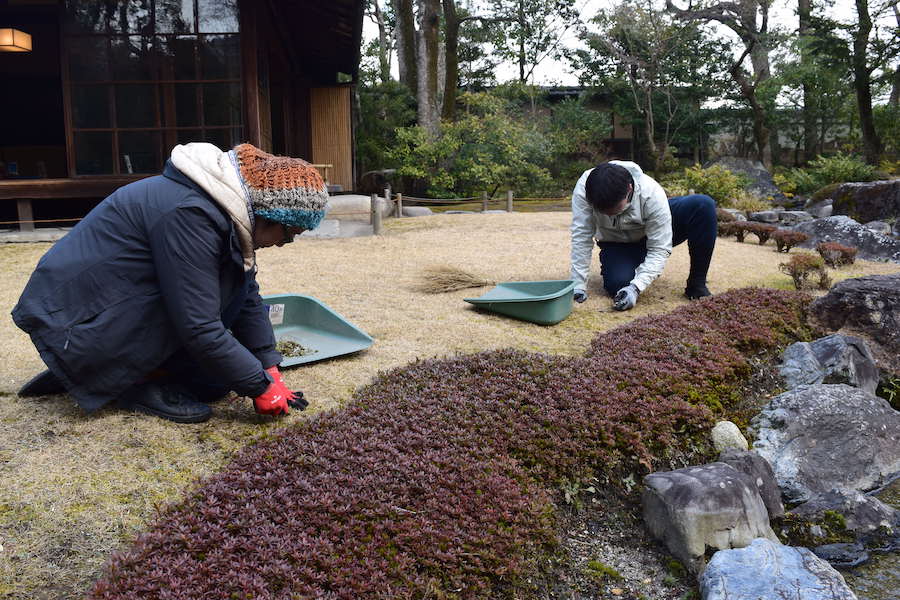
Cudweed is a familiar wildflower you often see by the side of the road. Murin-an’s lawn is packed with them. At first, I couldn’t find any of these buds that were hiding between the lawn’s blades of grass.
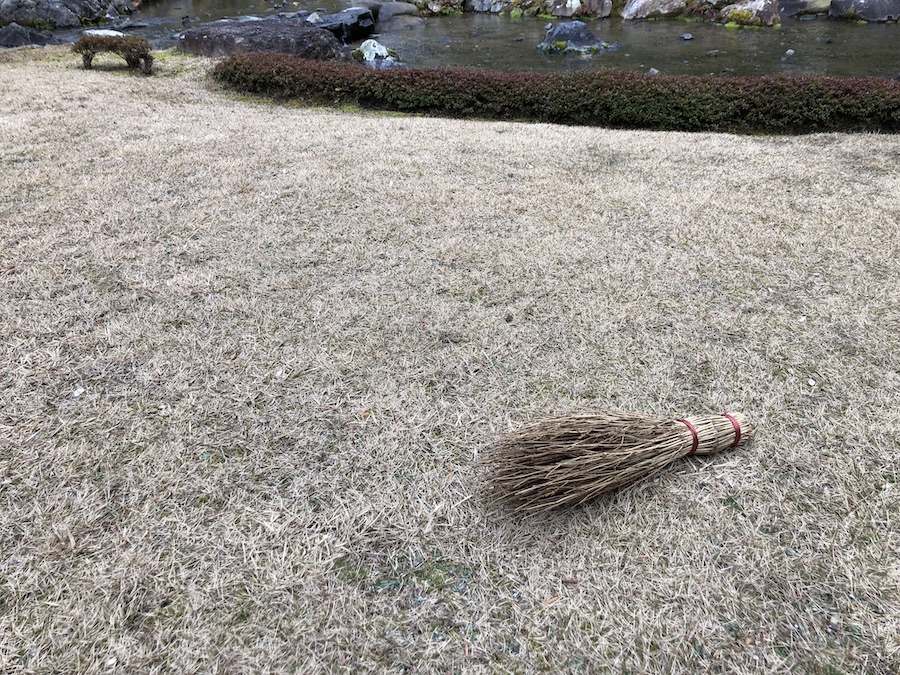
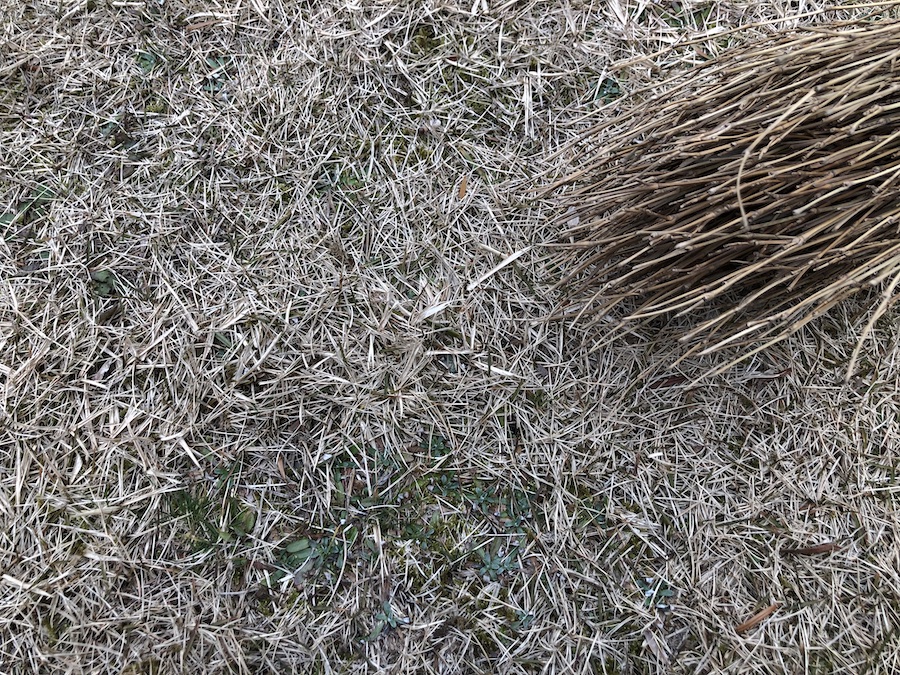
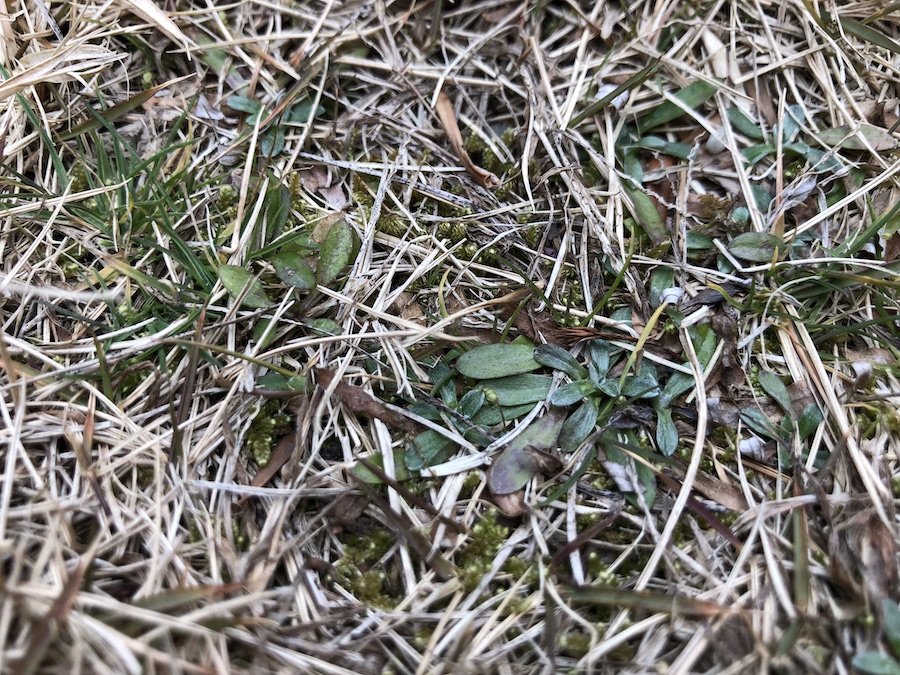
Cudweed
9:00 AM
As time passes, my eyes adjust and I begin to see the cudweed buds in the lawn. Besides cudweed, there are also several other wildflower species growing in the grass. Before I knew it, I was able to tell them apart.
“What work is that you’re doing?”
As I turned my eyes toward the direction of this voice, there were visitors looking at us with fascination. In the blink of an eye, opening time had arrived.
“We’re selecting ‘wildflowers’ from among the weeds. During the Golden Week holiday (May 2-6), the lawn will be covered with little wildflowers. Please visit again then!”
I told them something they can look forward to when they visit the garden in a different season. Hopefully, they will visit again the spring.
On this day, we cared for the lawn’s wildflowers all day, with a break taken between the morning and afternoon.
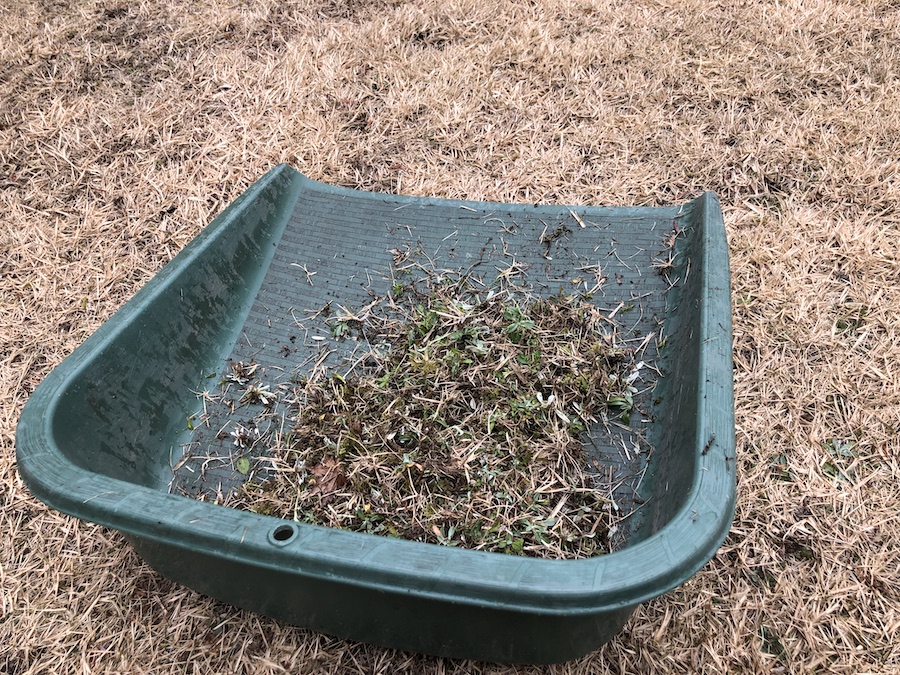
Today’s results
My goal is gradually to understand the meaning behind each of our head gardener’s movements! I am already looking forward to the garden work we’ll be doing for the next season. Be sure to look for my next upkeep journal entry!
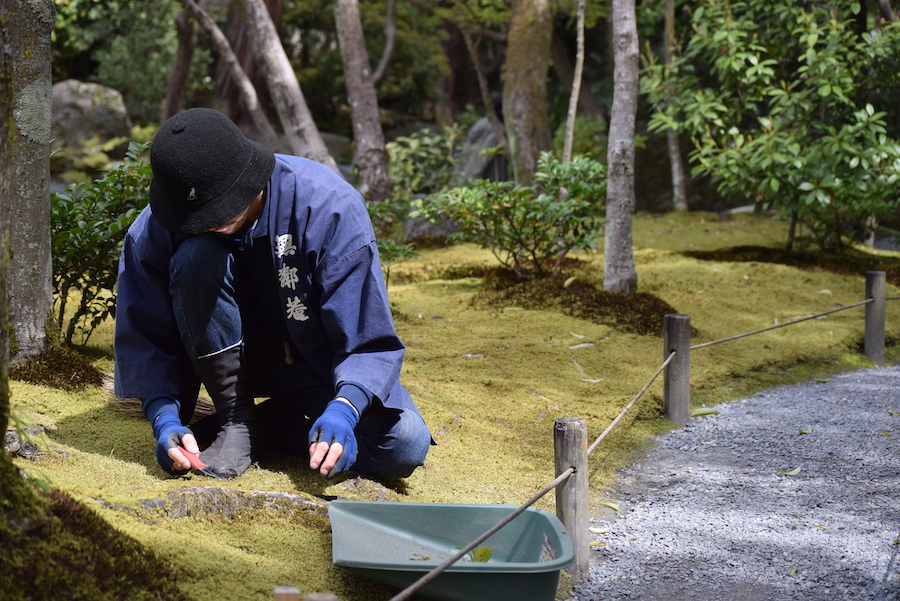
How it’s done